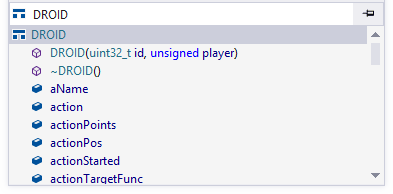
Let’s start exploring Visual Studio and ARM templates. First steps: Using ARM templates and Visual Studio Keep in mind that these are not the only methods to use your ARM templates - we can also use Azure CLI, Visual Studio Team Services, and others to take advantage of ARM templates, but the focus on this article will be Visual Studio, Azure Portal, and PowerShell.
#VISUAL ASSIST REARRANGE PARAMETER HOW TO#
In this article, we will explore some steps how to get your ARM template from an existent resource in Azure Portal, and then use the template to deploy using Visual Studio, Azure Portal Deployment, or PowerShell. We can use the same information to deploy the same solution in several environments and that is extremely useful when working in large and complex environments. We can achieve that using ARM templates, which are files based in JSON (JavaScript Object Notation), where we define which resources and their configuration, and using Azure Portal, Visual Studio, PowerShell, and CLI we can have the solutions being deployed in a consistent matter.
#VISUAL ASSIST REARRANGE PARAMETER CODE#
But in a corporate environment we need consistency and to be able to reuse code to deploy the infrastructure and solutions.

We do have the option to manually create a solution using Azure Portal and that is totally fine. Often, a solution consists of several pieces, which could be any type of resource, including VMs, Storage Accounts, VNETs, and Network Security Groups. Microsoft Azure uses Azure Resource Manager (ARM), which allows automation and consistency when deploying cloud solutions.


 0 kommentar(er)
0 kommentar(er)
